While Australia may not be as dangerous a country as many overseas visitors fear, there are still many dangers to be aware of, especially when travelling with a dog in Australia. From 1080 poison to snakes, and even just keeping your dog safe in your car, find out how to keep your pet safe in Australia while travelling.
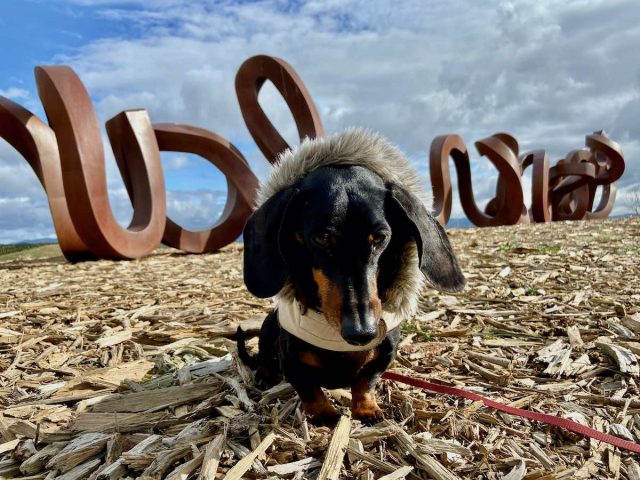
Note: This post contains affiliate links, which means I may receive commission if you make a purchase using the links. See my full disclaimer.
Secure Your Dog Safely in Your Car
No matter how short a distance you’re travelling from home, make sure your dog is secured in your car. It’s a road rule in many parts of Australia, though the exact requirements vary from state to state. But it also helps prevent your dog from being injured in the case of an accident, plus from becoming a hefty missile inside your car.
There’s multiple ways that you can secure your dog in your car. One of the easiest ways is to buy a seatbelt attachment for your dog’s harness, which should cost around $10 at most pet shops. There’re also special harnesses available for dogs that have been crash-tested and specially designed for use in the car.
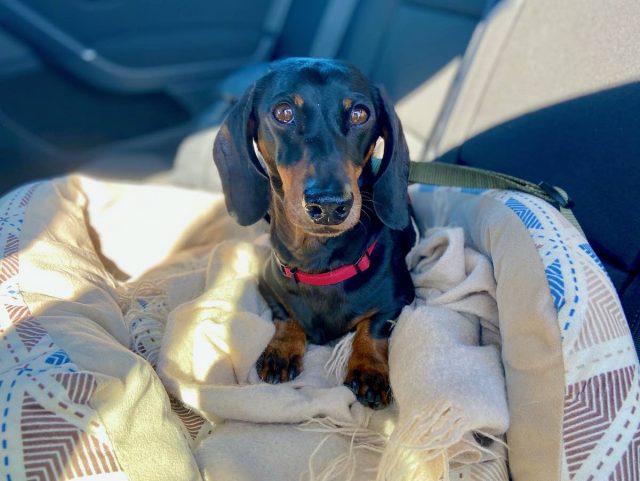
For larger dogs, it’s best to keep them in the boot area. Either get a mesh divider for the rear of the vehicle, that is installed behind the back seats, or get a sturdy crate for your dog to travel in. Remember dog car safety on every trip.
Keep Your Dog Leashed
I know it’s great to allow your dog to run around off-leash when possible, but only unleash your dog when it’s permitted, as well as safe to do so and they can be closely supervised. And only ever allow your dog off-leash in public if you can control them still!
When a dog is allowed off-leash, there’s a wide range of trouble they can get into, from encounters with not-so-friendly dogs to running onto nearby roads or devouring chicken bones left on the ground. Plus, if you’re in the bush, the risk of encountering some of the other deadly dangers I detail below are reduced if you instead keep your dog on a leash, by your side.
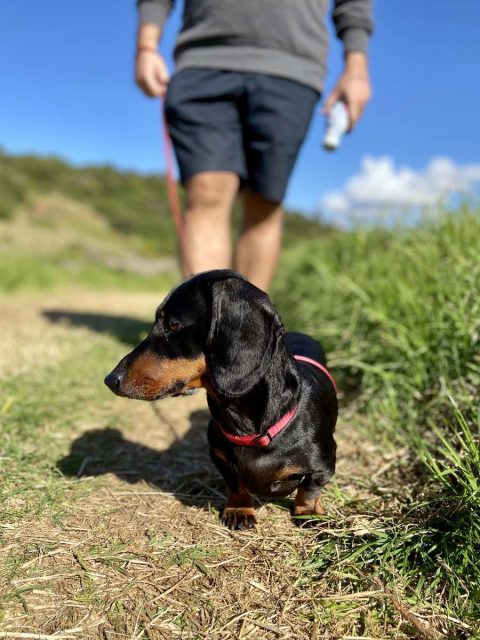
When camping, it’s also important to keep your dog on a leash – in fact most caravan parks and campgrounds require dogs to remain “leashed”. To still allow them room to move round, but keep them close by and stop them from wandering off, consider putting mesh fencing around your caravan or tent, or using a long tether.
Microchip Your Dog
It’s always a good idea to microchip your dog, even if microchipping is not compulsory in the state or territory you call home. (It’s now compulsory in every state and territory of Australia except the NT.) If your dog goes missing while your are travelling, the local vet, council or animal shelter will be able to get in contact with you via the microchip database and reunite you with your pet.
Before travelling with your dog, make sure your phone number on record is up-to-date, with a mobile number you will be travelling with. Also make sure you have a tag with your contact details on your pet. But a microchip will help if it goes missing or your pet runs off without their collar and tag.
Be Vigilant About Ticks
No matter if your dog is taking a walk through bushland close to home or while travelling, you need to be vigilant about ticks. It’s even possible for pets to pick up ticks in their own backyard, if local wildlife visit.
One of the most problematic ticks is the paralysis tick, Ixodes holocyclus, which causes tick paralysis and can be fatal. This tick is found along the Eastern seaboard, from Queensland down to Victoria. It’s most commonly found from Spring through to late Autumn, but increasingly year round, particularly as you head into the tropics.
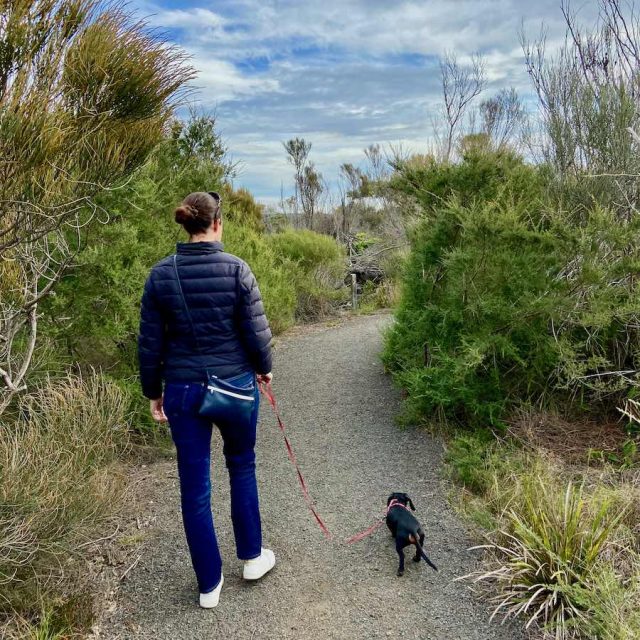
The brown dog tick and cattle tick is also found in other regions of Australia. The brown dog tick can carry the disease Ehrlichiosis – see more below.
As well as daily checking your pet for ticks, by running a finger nail through their fur, you should also use a tick treatment for dogs. Make sure you dose following the frequency recommended for paralysis ticks, if they are a risk, which may be more frequent than the dosage for other ticks and fleas.
Because I live in coastal NSW, I give my dog a NexGard Spectra chewable each month, which treats and controls ticks and fleas, as well as worming my dog. For a great discussion of other tick prevention options available in Australia, check out this guide.
Keep up Regular Vaccines
While travelling with your dog, it’s important to keep up your dog’s regular vaccines. In particular, specific vaccines may be required by some caravan parks or more often if you leave your dog in a kennel for the day.
If you’re concerned by over-vaccinating your dog, consider having a titre test done to confirm the current antibody levels of your dog. This applies in particular to the trio of distemper, adenovirus and parvovirus, often given as a C3 vaccine.
However, it’s best to always get a yearly booster for kennel cough (bordetella and parainfluenza), if your dog is likely to be around other dogs, whether at dog parks or while staying at a kennel. The highly infectious diseases that cause this condition, which can progress to pneumonia and chronic bronchitis, is like the flu for dogs.
Consider a Leptospirosis Vaccine
Depending on where you are travelling to and from, it might be worthwhile having your dog vaccinated for leptospirosis.
This disease transmitted through rat urine has generally been most common in rural areas of Queensland and the Northern Territory, especially during the wet season, but there have also been recent outbreaks across Sydney, the Hunter Region and Gippsland in Victoria. It can then be passed to humans.
Two doses of the lepto vaccine are required, given a month apart, then a six-monthly or yearly booster. Note that there are two different strains of the leptospirosa bacteria present in Australia – one in NSW and Victoria (Leptospira Copenhagi) and another in Queensland and the NT (Leptospira Australis).
It’s also possible to minimise the risk to your dog without vaccination. Don’t let your dog come into contact with stagnant water and waterways inhabited by rats and mice, whether for drinking or swimming, keep their water bowls up and regularly washed, and don’t let them hunt rats or mice.
Be Aware of Ehrlichiosis
Another disease that has had recent outbreaks in Australia is Ehrlichiosis. This tick-borne disease is spread by the brown dog tick and can be fatal if left untreated. It was previously one of the diseases dogs were tested for when they imported into Australia. (Since becoming endemic in Australia, this test no longer applies.)
This disease was first detected in dogs in the East Kimberley region in May 2020. Since then, additional cases have been recorded throughout northern Western Australia, plus the Northern Territory and northern South Australia, and most recently in northwestern Queensland, including Mt Isa. By the time you read this, the range may have expanded further.
If you are travelling to the affected regions, it is vital that you use a tick prevention treatment for your dog, whether a chew, spot-on or collar, plus check your dog daily for ticks and avoid tick-prone areas. To be on the safe side, be careful in surrounding areas, too.
In addition to my dog’s usual monthly chew, we also used a Seresto collar (available for both puppies and small dogs, or medium and large dogs).
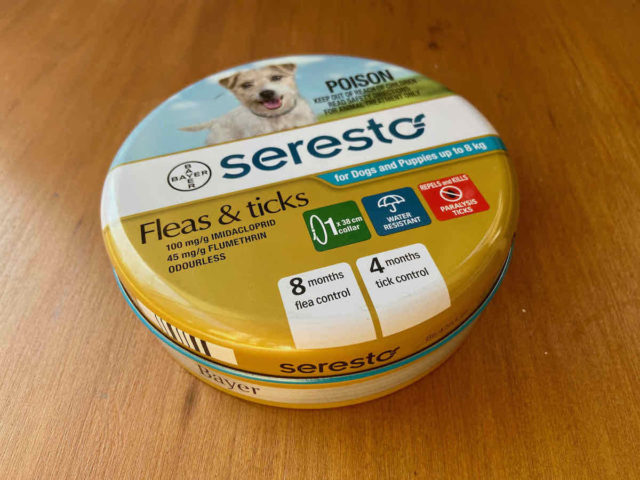
There was previously a requirement to report the movement of dogs out of the Kimberley region of WA into southern WA, but this no longer applies. However, dogs being taken to Tasmania need to have a declaration signed that they have been checked for ticks.
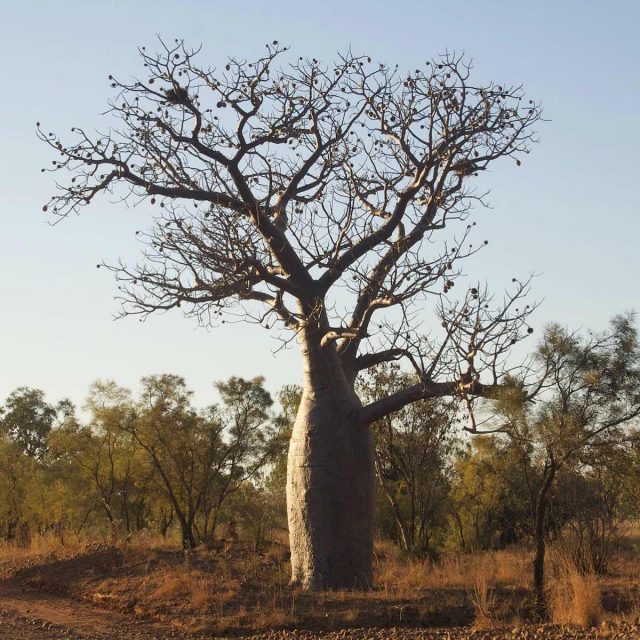
For more information, including maps of the areas where this has been detected, see the WA government website and the NT government website.
Look Out for 1080 Baits
One of the reasons that dogs are not permitted in most national parks in Australia is due to the regular use of 1080 poison, sodium fluroacetate, baits. These baits are frequently used to control foxes and feral cats. These baits can also be used in reserves where dogs are permitted and by private landowners.
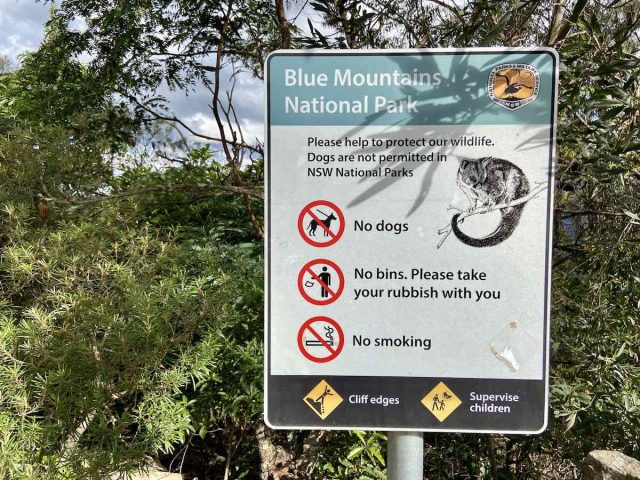
Unfortunately, these baits can also easily kill your pet dog or cat. For this reason, these baits have been banned in most parts of the world, but unfortunately not yet in Australia or New Zealand. These baits are particularly widespread in Western Australia. So much so that the Parks and Wildlife Service of Western Australia advised in September 2020 that it’s best to leave your pets at home while holidaying.
One of the most important steps to keep your pet dog safe is to be aware of where these baits have been placed. Check online maps and lists of warnings in advance, such as this map for the WA Western Shield program. Keep an eye out for signs stating that baits have been laid and keep your dog away from these locations, even if it’s your favourite local walk.
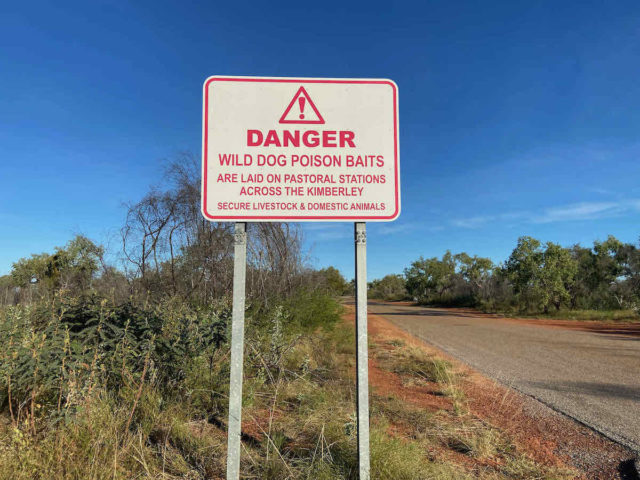
However, there is still a risk of 1080 poisoning in dogs, whether due to birds moving baits or some landowners not properly signposting the use of baits. You should also keep your dog on a leash, by your side, and use a muzzle that prevents your dog from eating or even licking a bait.
A muzzle that is frequently recommended as an anti-poison dog muzzle are the UK Yard Muzzles for Greyhounds. Baskerville muzzles are also frequently recommend, although they still allow a dog to eat a treat, or solid wire cage muzzles. Fit the muzzle on your dog ahead of time, making sure it properly fits and cannot be removed, and muzzle training is essential.
If you believe that your dog has been poisoned by a 1080 bait, it is essential that you seek veterinary assistance immediately. Early signs include frenzied behaviour, vomiting and loss of bowel control. There is no antidote and the poison is usually fatal.
Keep Watch for Snakes
Just like humans in Australia are at risk of a bite from our many deadly snakes, your dog is also at risk of snake bites. The best way to keep your dog safe is to keep them on a lead by your side. In particular, don’t allow them to run through long grass or camp next to long grass, and be wary around signposted areas.
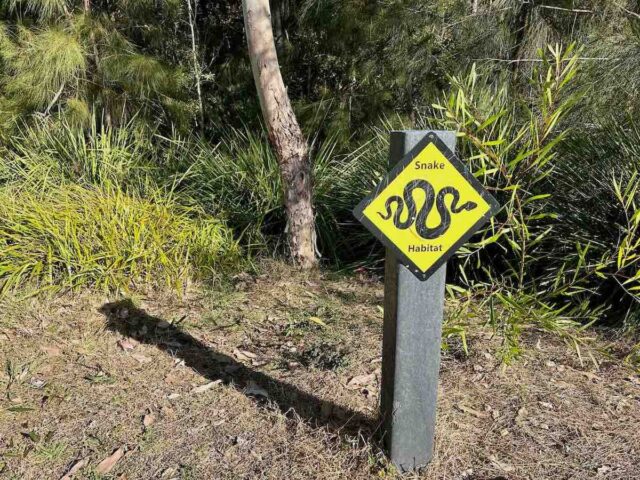
Ideally, the snake will sense the vibrations of yourself and your dog, and leave the area. Despite my many years of hiking and camping throughout Australia, I have only rarely spotted snakes. If you do see a snake, just stand still and move slowly away. Don’t threaten it – they are usually more scared of you!
There is also the option of doing snake aversion training for dogs, but this is quite controversial, as it usually involves electric shock collars and may not always be effective. There is also alternative training methods without shock. This training is most common in the United States and I don’t have experience with it.
If you suspect your dog has been bitten by a snake, get them to a vet as quick as possible, as with timely anti-venom treatment, pets can be saved. Find out more in this factsheet.
Plus Crocodiles, Dingos and More…
Snakes aren’t the only dangerous creatures you need to be concerned about while travelling in outback Australia with your dog. Some other dangerous animals to keep an eye out when it comes to dog safety are crocodiles, dingos, cane toads, eagles and box jellyfish.
Crocodiles are one of the biggest dangers to dogs in northern Australia, in areas where saltwater crocodiles are present. Don’t camp close to water and river banks where crocodiles may be present (both fresh and salt water). Plus naturally don’t let your dog swim in waterholes where there is the slightest risk of crocodiles.
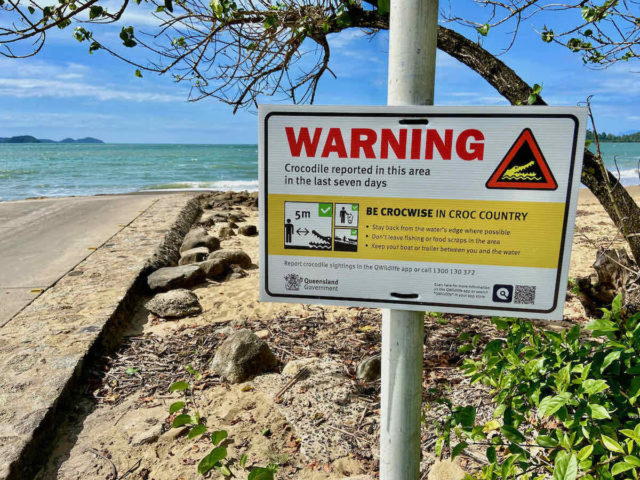
Dingos are also a danger in many parts of outback Australia. In fact, many dog owners believe they are a bigger concern than crocodiles and snakes. When toileting your dog at night, keep your dog on a leash. And never leave your dog to sleep outside in dingo country.
If there are cane toads present in the area you are travelling through, don’t let your dog eat or even touch a cane toad, due to the poisonous glands in their shoulders. A muzzle is a good option to keep your dog safe, the same as for 1080 poison. Note that the range of cane toads has been gradually expanding, with some detected in NSW in recent years.
Even eagles can be a risk for smaller dogs. It’s entirely possible for a large Wedge-Tailed Eagle to swoop and pick up a small sized dog, that has been left unattended or is walking off leash. Plus dogs should be kept out of the ocean during the box jellyfish season up north – check for warning signs at beaches.
Consider a Pet First Aid Kit and Course
Consider putting a first aid kit together for your pet, the same as you should carry a first aid kit when travelling to remote areas. Take into consideration where you are travelling and the possible dangers, plus consult with your vet first. Some items to consider include:
- Your pet’s usual medicines from at home
- Tweezers for ticks or a specialist tick removal tool from a pet store
- Stretch pressure bandages for snake bite
- 3% hydrogen peroxide and a syringe to induce vomiting, following suspected poisoning
- Antihistamines
- Betadine antiseptic spray
- Cotton wool and sterile dressings
It’s also a great idea to complete a pet first aid course, if you are heading to remote areas. There’s no use having pet first aid products if you don’t know how to use them! There are multiple pet first aid courses available in Australia, including many online options.
Consult a Vet Online
If your pet is injured or falls ill while travelling, it’s best to get them to a vet as soon as possible. Keep the phone number of a local emergency veterinarian handy, although if you have data on your phone it’s also possible to quickly search for the closest one.
However, there are many areas of Australia where there isn’t a vet close by, with a visit to the vet taking many hours of driving, too long in an emergency situation. In those cases, it might be possible to get instructions from the vet over the phone, or alternatively turn to the growing number of online vet consultation options.
One of the options available is Your Vet Online. They offer one-on-one consultations around the clock, via chat or video, with no appointment required to speak to a registered Australian veterinarian. For an additional fee, they can also provide a script. Another option is WebVet from Greencross Vets, which is also available 24/7.
An online vet is also a great option for when you’re not sure whether you really need to take your pet to see the vet, providing a more convenient initial opinion, before perhaps later visiting a vet in person.
You May Also Like
- Travelling with a Dog in Australia
- How to Go Camping with Your Dogs in Australia
- How to Go Hiking with Your Dogs in Australia
About the Author

Shandos Cleaver is the founder of Travelnuity: Dog-Friendly Travel. She has travelled extensively with her Miniature Dachshund, Schnitzel, including to 33 countries across Europe, every state and territory of Australia except Tasmania, and 10 of the United States. She’s passionate about providing inspiration and information to others wanting to travel with their dogs, whether close to home or internationally.
Inspired? Pin this to your Pinterest board!
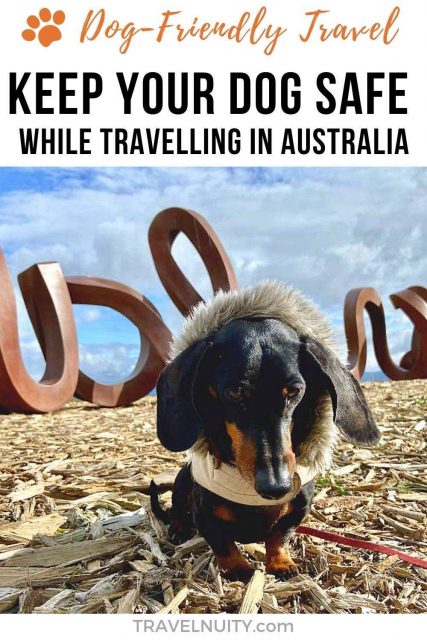

Thank you so much. Great info.
Thanks Jackie!